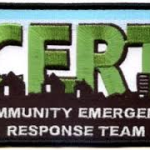Before I get to today’s article I have a quick personal update. I am having arthroscopic surgery to correct an impingement on my left hip early tomorrow. I have no idea how I’m going to feel the rest of the week. If there isn’t another article this week or an email response or if I am slow to respond to a comment or email, now you know why.
Become More Proficient With Your Gun Without Firing a Shot
Even though ammo prices have come down some, shooting can be a very expensive hobby. Being proficient with your gun involves more than just shooting. Today I am going to give you some exercises you can do for free or with minimal investment in the safety of your home, without firing a single shot.
For the sake of safety, I recommend you practice these things with an unloaded firearm. Be sure to double check.
Dry Firing
Dry firing simply means that you practice all of the mechanics of firing a firearm with either an empty chamber or some type of snap cap, which is a plastic dummy round. Dry firing is fine with most firearms. Check your manufacturer to be sure. I know you should not do so with a .22, as it can damage the firing pin.
The benefit of dry fire practice is that it can help correct bad habits, such as anticipating recoil. If you anticipate the loud bang and the gun bucking in your hand, you can pull down and left (for right handers). If there is no loud bang, you can practice steady hand control, and do it enough times that when you do go to the range you are in the habit of not pulling down and left.
Another way to find and correct bad habits is to stack a few pennies or dimes on top of the slide. If they fall when you squeeze the trigger, you can tell if you’re pulling one way or the other by the direction and timing of when the stack fell.
Yet another way, this time with a cost, is to buy a laser. Nebu Preotec lasers are fairly inexpensive, at around $50. The one I have now is accurate enough to use for aiming at something I actually wanted to hit. It is very easy to tell if you are pulling one way or another.
Drawing From the Holster
It’s a fact, many ranges will not let you draw from the holster. The problem with this is that if you’re ever out and have to draw from the holster, you’re going to be much clumsier under stress than if you had practiced.
If you combine this with dry firing, you can practice an entire self-defense cycle. I know some people love the buzz timers for practicing and I think that is great if you’re practicing for IDPA or another competition. I don’t like the idea for self-defense training though. If you’re out on the town and you hear a loud noise, you’re not going to pull your gun and start shooting. No, if you hear a loud noise, you’ll orient yourself to the direction of the threat, look to see what is going on and then you’ll determine if you need to draw or not.
Instead of a buzzer, use a TV show or a movie. Since no one in the show is actually going to be a threat to you, pick a character, and every time they come on the scene draw and fire. Or pick one color shirt, say red, and every time someone comes on the screen wearing a red shirt, you draw and fire. If two people are wearing red shirts, scan and dry fire at them.
If you get a new holster this is something you should do. For instance, my gun sits very differently than I was used to in the Crossbreed holster I got last summer. Also practice re-holstering without looking. If you are ever forced to shoot, you’ll want to keep your eyes on the attacker and the ongoing scene without looking for your holster.
Drawing From a Concealment Garment
Drawing from the holster is great, but make sure you add in doing so with the clothes you wear when you are carrying it. If you use a CCW purse, practice with it.
Adding in the one extra movement, that of clearing your garment before you can draw, can really foul things up and slow you down.
Practice Without Looking
As I explained in Changes in the Body During a Critical Incident, many people experience time distortions during a critical incident. For this reason, I recommend you learn to reload without looking. The reason for this is that if you look at your hands, you may perceive that you’re reloading much to slow, and then speed up when you were going at normal speed. The problem is that if you speed up, you might make a mistake.
Do you have any tips you can give that can help us be more proficient without firing a shot?
If you would like to repost this article, feel free to do so. Please mention that it was written by Chris Ray and provide a link back to this page.
If you liked this article please think about sharing it on the social media listed below, thanks!







